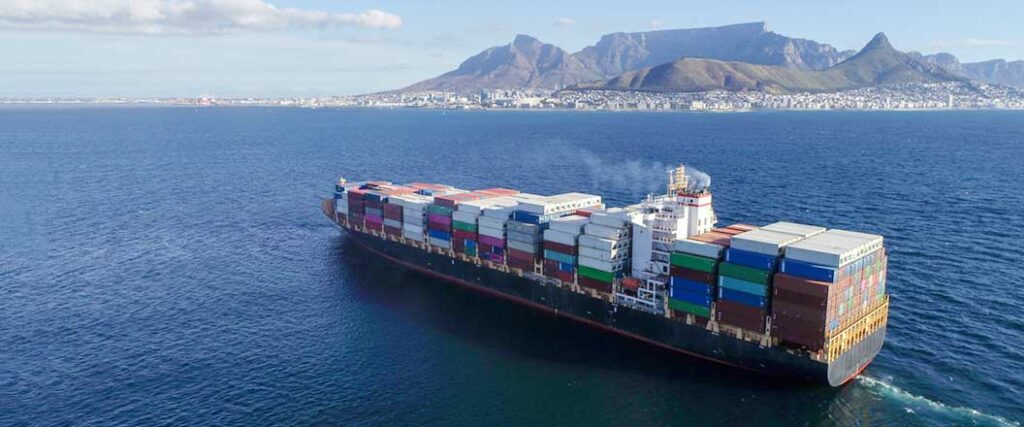
Understanding of the situation and readiness to adapt are essential. It means reevaluating logistics plans, shifting strategies to avoid potential bottlenecks, and working proactively. By doing so, you mitigate the risks associated with this key shipping route, and maintain the integrity of your supply chain operations.
Shipping lanes through the Red Sea and the Suez Canal continue to face disruption amidst ongoing conflict. Despite efforts to safeguard the vital entry points and alleviate the fears of major carrier lines, more ships are choosing to travel around Africa and the Cape of Good Hope.
Shippers now face the issue of planning for long-term changes to established routes. As of this update, various shipping alternatives are being explored, including overland routes for goods traveling between China and Europe.
Shipping routes being further considered include:
There has always been direct shipping between Asia and major ports such as Long Angeles/Long Beach in California. However, after struggling with congestion delays throughout 2021, routing ships through the Suez Canal and the Atlantic became popular.
Since the direct route is still well established, it stands out as the more obvious option for shippers looking to bring in imports from places like China, Vietnam, and India.
For shippers that need to reach markets in Europe and the U.S., the overland route provided by the CRE is a viable option. Freight can travel by direct rail from various production hubs in China to multiple cities in Europe, including Germany’s main port in Hamburg.
Travel times average between 12 and 20 days depending on origin and destination points. Since conflict in the Red Sea began, volumes along the CRE rail lines have increased about 30 percent.
The Red Sea serves as a strategic artery in world trade, facilitating the movement of vital goods through the Suez Canal, one of the most trafficked waterways on the planet. Recent disruptions and rising political tensions in the region are having direct impacts on global trade.
Conflict escalations are largely due to Yemen's Houthi militants and their attacks on shipping vessels leaving and entering the Red Sea around the Bal al-Mandab Strait. Multiple ships have been fired upon when passing through the area since the attacks started in November. This raises serious concerns for international shipping and global economies.
Despite the Houthi’s claims to only target vessels linked to Israel, vessels under multiple flags have found themselves targeted. Many carriers deem the risk too great and paused or rerouted shipments.
Major carriers that have already begun rerouting ships include:
Many of the ships being rerouted are large container ships, often carrying between 15,000 to 20,000 TEU’s of cargo. Other carrier companies continue to use this critical passageway despite the risks involved.
The most common alternative route for ships traveling from ports in Asia to Europe and North America’s East Coast takes them around Africa and the Cape of Good Hope. The route adds between a week to 10 days to the previous transit time.
Beyond longer journeys, there are additional impacts to global trade and shippers to watch out for:
Hundreds of different commodities frequently travel through the Suez Canal, but oil makes up a large percentage of that. It’s estimated that about 12% of global trade, and at least three million barrels of crude oil, use the Red Sea routes daily.
Although some of these worst-case scenarios are still being avoided, being aware of the possibilities may help importers and related businesses develop contingency plans.

The Cape of Good Hope route, while longer, offers a safer alternative to the Red Sea passage and is open all year long. Another emerging alternative is the Northern Sea Route, which, although less developed, provides a potential option for future diversification.
Unfortunately, the Northern Route, which passes above Russia and through the Arctic Circle, is only passable a few months of the year at the height of summer.
Of course, the other viable option is simply staying the course. Neither the Red Sea nor the Suez Canal are discouraging ship passage. Quite the opposite, considering how important it is to the regional economy.
In an effort to stave off the potential economic downfall resulting from a blocked Suez Canal, several nations have formed a protection initiative in the area. The goal isn’t to escort ships personally, but serve as a deterrent presence, offering an umbrella of protection to all that pass.
Initialized by the U.S. and joined by nations such as Norway, Canada, France, and the UK, Operation Prosperity Guardian has successfully helped over 1,000 ships navigate the Bal al-Mandab Strait since going into effect in December 2023.
Given the increased risks and potential delays in maritime shipping due to Red Sea attacks, turning to air freight can be a strategic move. Air cargo providers, although more costly, allow for considerable flexibility.
On the plus side, air cargo freight benefits from:
Air freight can travel via passenger craft, which often set aside a certain amount of space for cargo, or through airlines specializing in air freight. For special, time-critical cargo, chartered flights are also an option.
In the case of small to medium-sized businesses, there is another reason to consider air freight, despite the added costs. When ocean transit times become longer, many large companies may try to fit as much of their cargo onto a single vessel as possible.
Larger companies will typically have the capital to pay higher rates for this service. Unfortunately, it means that smaller loads can get rolled over onto the next available ship. Depending on the shipping schedule, that can create delays of weeks or even months.
During peak seasons, when businesses need to get in cargo within a specific time frame, such delays can be disastrous.
Although shipping by air may be more expensive at that moment, your products also get to market that much faster. What you pay extra for air shipping may still be less than what a delayed shipment will cost in terms of lost revenue.

In the ever-changing landscape of international trade, especially with the current disruptions in Red Sea shipping, importers need to be more agile and prepared than ever.
Here are some practical tips to help minimize disruptions and maintain a smooth flow in your import operations:
By following these tips, importers and international trade businesses can navigate the uncertainties of global shipping more effectively. A proactive approach to potential issues saves money and keeps business flowing.
For importers seeking new markets that allow them to avoid the region entirely, an experienced U.S. Customs Broker is critical.
Opportunities to import from regional markets in the Western Hemisphere are expanding. From apparel to electronics, the manufacturing abilities of nations such as Mexico, Honduras, and Brazil continue to grow.
Customs brokers are able to assist importers in:
The goal is to find solutions for your business that keep profit margins steady. Seeking secure shipping lanes and exploring new trade opportunities to diversify your supply chain is simply good business.

Find new suppliers and manage unfamiliar customs regulations with expert consultants.
Get up to 45 Minutes of 1-on-1 personalized guidance.
The challenges posed by the current Red Sea shipping disruptions highlight the need for adaptive strategies and expert guidance in international trade.
At USA Customs Clearance, we understand the complexities and nuances of these challenges and are committed to providing our clients with the most effective solutions to navigate through these turbulent times.
Let us help you find the most effective and efficient shipping alternatives for your business and call us at (855) 912-0406.
Trust USA Customs Clearance to be your guide in navigating the complexities of international trade with confidence and ease.
 Copy URL to Clipboard
Copy URL to Clipboard

Google is changing how it surfaces content. Prioritize our high-quality guides and industry-leading coverage in search results by setting usacustomsclearance.com as a preferred source.
Add your first comment to this post